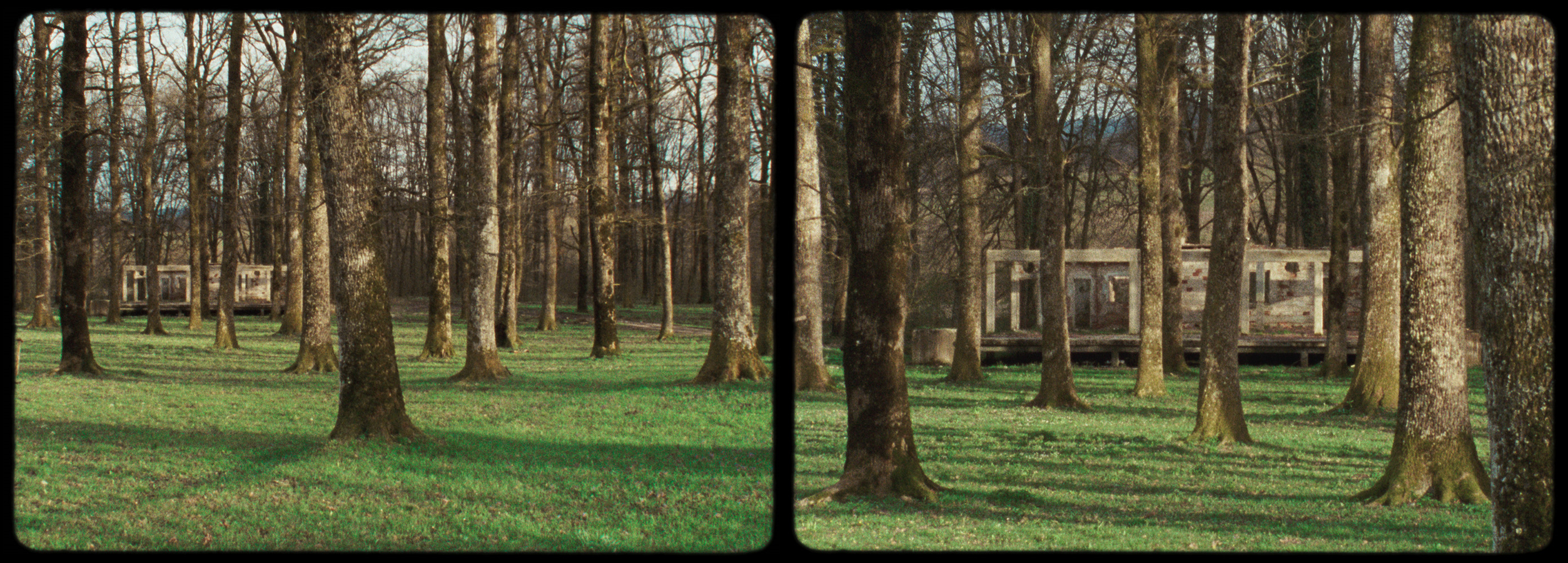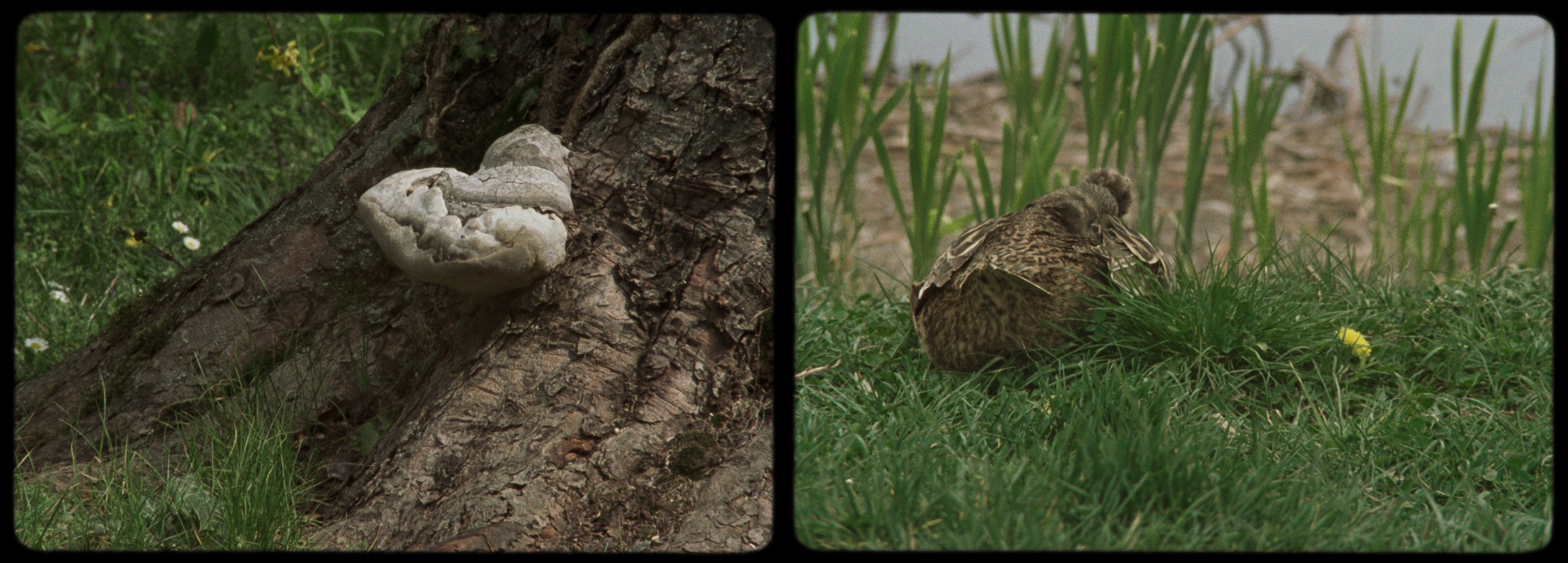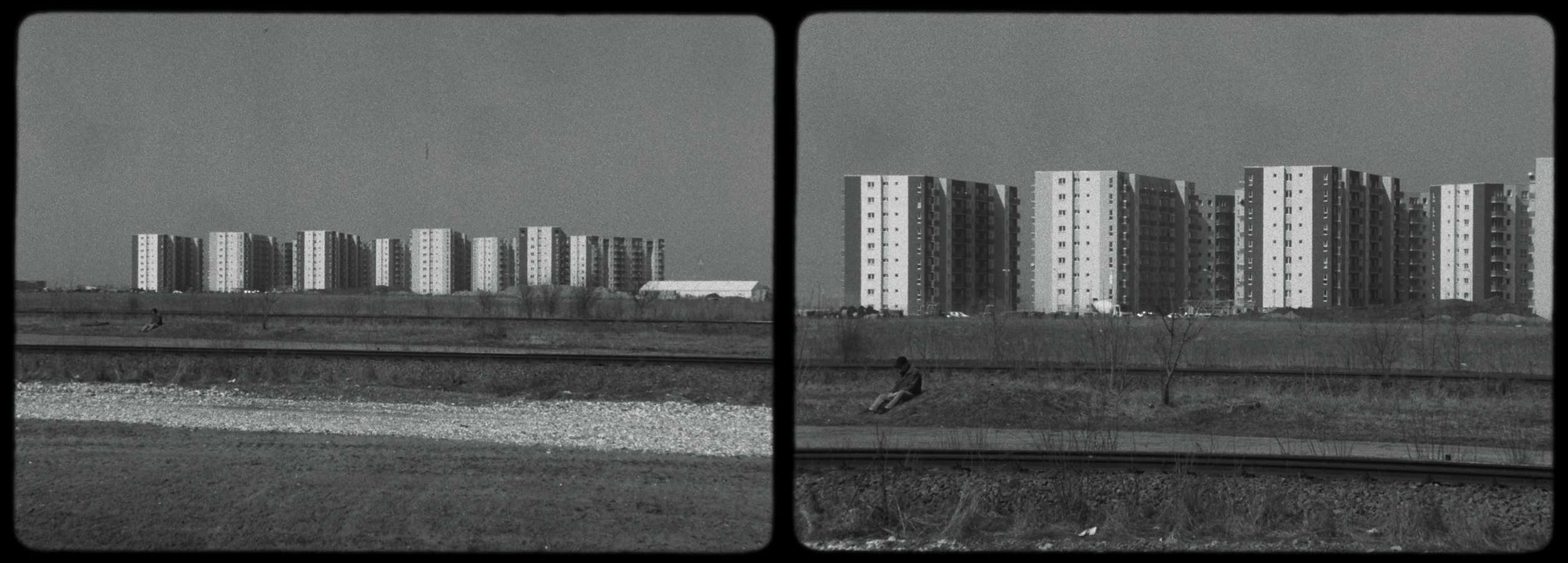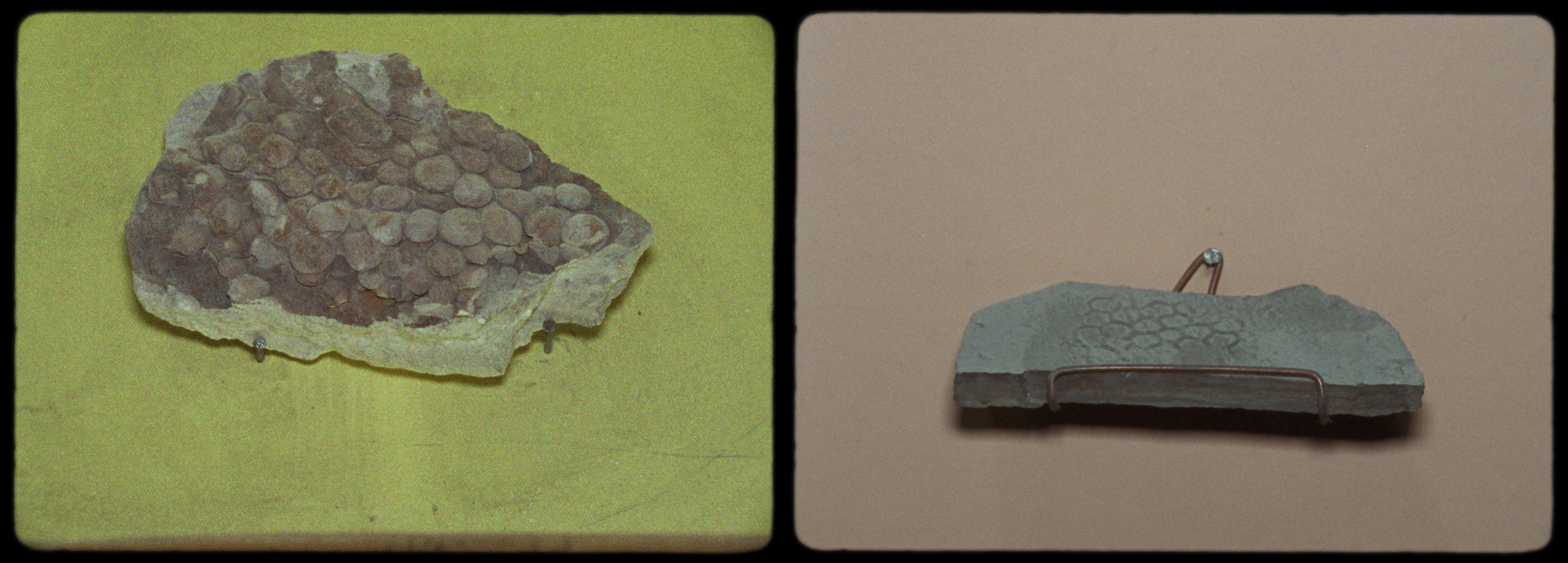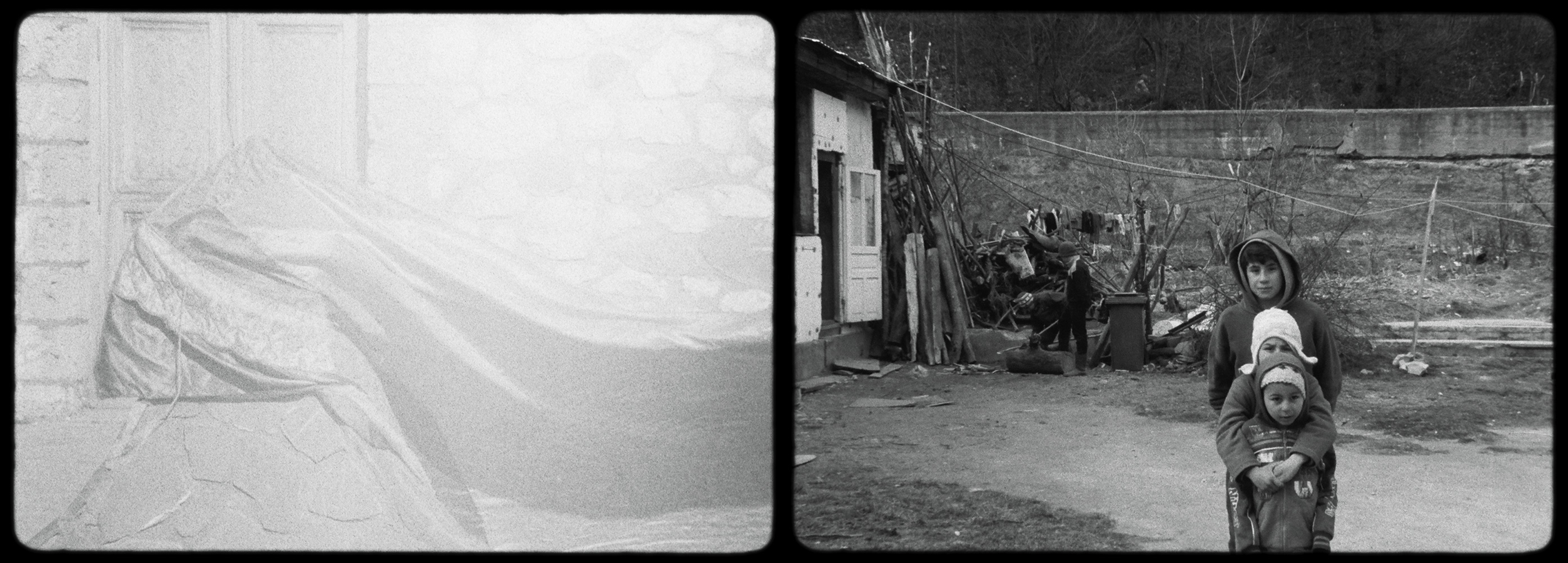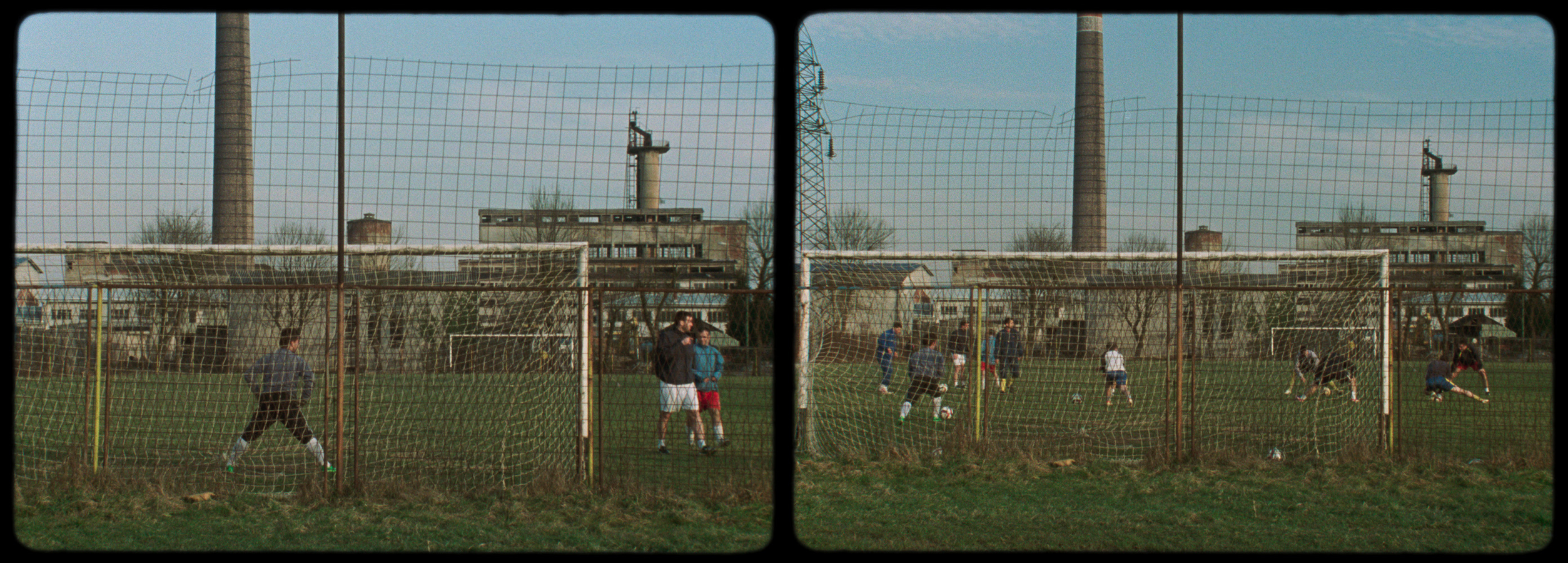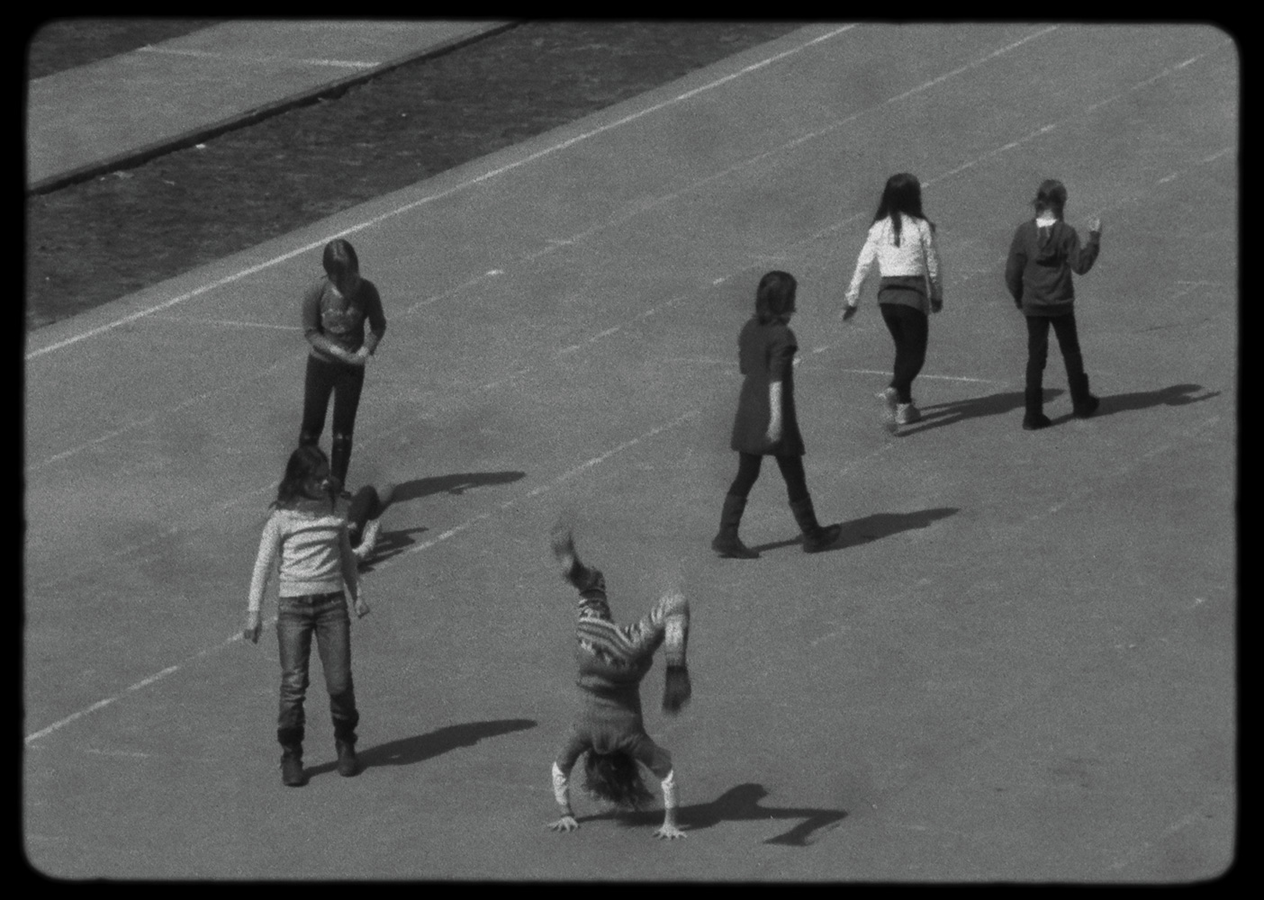Throughout the film I am employing documentary images, there’s nothing really ‘staged’ or acted out for the camera. There is, however, a plethora of moments of re-enactment in the sense of re-framing, re-thinking and attempting to re-scribe. Such performative aspects, in consequence, are linked to the physical act of repeatedly returning to specific places.
Interested in the document but not in the immediate, non-arbitrary causality of events, it was not my intention to place things in a consistent, ordered state, either historically or geographically. The historical specificities of places and events can be conveyed, I believe, not in degrees of the images’ ‘truthfulness’, nor in a chronologically faithful narration, but instead in a refracted approach towards the framing of missing parts. Disclosing the grades of ‘darkness’ that the filmmaker passes through can become a tool to apprehend the densities and thicknesses of history. It might be through the act of sharing with the spectator one’s incomprehensibility that meaning is allowed to emerge. In making the act of framing (which I understand as an act of moving-towards) visible and/or audible, qualities of constructedness and fabrication come equally to the fore, as does an etching of a historical topos in its manifoldness.4 Causality is, in my view, re-figured through the process of montage in the way images activate or are triggered by their neighboring images, sounds and speech, as well as the silences and pauses, creating chains of kinships. Thus the cut in the editing process acquires a tectonic valence in the transgression of its own boundary-like qualities, and in the concurrent production of new meaning.
I like to use the term ‘open-ended’ to describe the series of journeys that I undertook with Bernd Bräunlich in Southeastern Europe between 2011-2015. Open-ended engenders a question that cannot be answered with “yes”, “no”, or even “don’t know”; it finds itself in a ceaseless state of its own making. It is this formability and malleability of a processual notion that intrigues me. To resist taxonomies and rational systematization is also to be willing to expose oneself, even to failure. The inherent potential for disintegration or collapse becomes a palpable probability. I sometimes read Days In Between as a recurring attempt at approaching and understanding, the constant failure and beginning anew growing into an integral part of the narrative. In doing so failure became intrinsic to a process of creating open systems and raising questions. A cognitive and rational mapping of place, politics and history was, throughout the different draft versions of the film, gradually succeeded by a more sensory and tentative one. Through the affective means of responsiveness, receptivity and memory I attempted to trace wider connections that jar with compartmentalized presuppositions. Considering historical memory as almost always being already a matter of distortion is a perspective that runs through the commentary. I was often thinking when editing the film that we might be telling a story (in the sense of a ‘linear’ progression bound to a timeline), but I’m unsure if the film has a, or indeed, any story. The story might rather be one of deconstruction, of dismantling a mental image (or images) of the region. Or even that the story of telling, of asking to be heard, becomes the film’s protagonist and its plot. The act of returning, the subsequent distortions that these periodic returns engender, and the reflexive engagement with processuality’s reverberations inscribed in the film’s narrative create a compositional discord. This dissonance makes one thing clear: the object of the film is not self-evident, it does not pre-exist.
History, as a matter of fact, can arise as a possibility in exactly such cracks as those provoked by the structural leaps of a disjunctive montage. What is valued is not a final, rigid outcome, but a series of processes, not always documented, that precede and anticipate a result - regardless of whether they are materialized or not. Transformed, as they are, through a montage of differences, documentary images (that remain nevertheless historically and politically inflected) cannot, most of the time, be traced back to a reliably recognizable documented reality. Detached from its original underpinning, similarly to images, history too is being disassembled, reinterpreted and thus re-invented as a meta-historical gesture.
In an attempt to retain something of the region’s historical complexity and plurality, history is thus conceived in the plural: as histories that can stay suspended in space, intrude and abruptly disrupt a seemingly sequential flow, can be submerged, or can re-surface further downstream.
It is rather dis-covered and re-covered anew each time, whilst performed in the process of repetition and in the gaps in-between. Every return elicits another form of loss: the passing of a beloved person, the dissolution of a nation, the waning of memory, the destruction of a landscape. As the film is gradually building up by juxtaposing images, sounds, words and silences, the idea of a ‘representation’ is all the while receding. All along there has been something knotty in my understanding of representation. Opting against purposeful, unerring strategies provided the space for interrogating the notion of rational understanding and normative classification.
Such a contingent process, with the aforementioned inherent risks, tried at the same time to be analytic in its engagement with the subject matter(s).1 As the jagged and dashed storyline unfolds, an inner logic is (hopefully) revealed, one possibly grounded in the long and invisible time preceding the completion of the film and established through our recursive returns to the region. “Re-membering is a bodily activity of re-turning” suggests Karen Barad.2 In the course of repetition I sensed the potential for ever-growing openings onto possibility. The aberrations and deformations in the very fabric of places in the time of our absence carry the narrative forth. Becoming aware of this other in-betweenness sensitized both the present and the state of being-present.
Growing up in a divided country one literally grows into a realization of the multiple truths, realities and temporalities of a place; its multi-vocality is genuinely enmeshed in the socio-historical fabric — even when its chorus is matched by one of exacerbated nationalism(s), structural violence, inhumane dogmas and religious hypocrisy.
In Days In Between there is an ambiguity and uncertainty as to who is talking due to the multiple subjectivities engendered in a text that doesn’t attribute gender, sex or national identity to the enunciator behind the commentator’s voice. The addressee’s traits in this correspondence are equally ambivalent. Personal histories are withheld. Subjectivity of the voice and subjectivity of the text are delinked. The infra-voice derived from this friction develops an agency that underlines such an ambiguity.
This links, in a sense, to my own fragmentation as filmmaker in relation to the places that are studied. Such a friction might suggest a reading of affect as a reminder of how contingent our awareness is, even at times of in-depth introspection. Moving counter to the reflective, uncertain content of what is said lies the choice of a male, authoritative-sounding narrator, rather than a female voice, which could easily coincide with the filmmaker and support the autobiographic undertone of the film. These discrepant elements seem to rub each other up the wrong way, and yet to me it was a strategy to elicit vulnerability by transplanting it to an incongruous voice. The clearly British native speaker alludes to my native Cyprus, an island under British colonial rule until 1960. In this stream of thought the master voice can be no more, it
A film undoubtedly has something at stake and occurs in a set of social conditions with a historical weight. To borrow the words of Adrienne Rich, “A place on the map is a place in history”.5
Of great importance to us was therefore to look at the places visited through a lens of suggestive insights into the political and other forces that have shaped their identity, and to critically reflect on ideological fault lines that channel how histories and current affairs are written and/or transmogrified. What is the pertinence of past events for the present moment and how can one open up history’s trajectory into the future? A narrative gradually developed, one that blends historical and political facts with personal responses and digressions, leaving space for the spectator’s own (hi)stories - and drawing the spectator in as an active participant in the creation of meaning. The loosely connected cells of information or meaning ask the viewer to re-link them. At the same time such an ellipsis leaves something to be desired. Narrating a story about a past-present becomes current by these means, and comes to inhabit the now.
ceases, short-circuited, as it were, by his own words of skepticism, uneasiness and concern. The speaker, then, assumes the role of a transmitter, who might master the language as a form but does not have power over the content of what is spoken. This stresses a certain distance from the discourse — a distance that prevents me from seizing or possessing my object of observation. Difference is not veiled, but retained as a bounding condition from which one is to tell a story.6
On another note the indefiniteness mentioned before finds its counterpart in the nondescript and polysemous traits of much of the imagery. In the countries of the Balkan Peninsula it becomes clear relatively quickly that what one sees is not what one thinks it was at first sight; what one perceives visually has little to do with what it means in specific moments in (recent) history or for specific groups of people. Landscape can equally be a lived space and a template for ideological projections. It can evoke memories or awaken desires. Landscape can rarely, if at all, be neutral; it is more often than not a palimpsest of entangled historical narratives, of atrocities and war crimes. Sometimes the decay of the manufacturing sector is very tangible, as evidenced by the massive abandoned industrial plants. At other times the structural violence is more latent. Even a pristine-looking landscape is scarred, impinged upon by barely visible agents that transform the way we perceive it. Blossoming stretches of land can be still mined, settlements can disappear under water like Ada Kaleh, and emerald-colored rivers like the
Long-term observation as a mode of working occurs very often in my practice and appears to provide the tools to approach the complicated and fragmented histories of a place. A material, worldly experience of the present, often taking the form of waiting, engenders a gesture of being in the world. Here I was interested in how long-term inscriptions make sedimentary traces of history manifest in micro-stories in the present, not to juxtapose the macro with the micro in their difference in scale, but to realize that the cracks separating and joining these layers had all the time been there, albeit in another configuration.
Deceleration allowed for a heightened sensitivity and enabled background processes to gradually come into (sensory) view, whilst exposing our dealings with imposed economies of time. A purposeful, calculated and goal-oriented activity was thus replaced by a wandering and unrestricted preoccupation. This replacement was effected in order to engage with a world that is equally slow in its complexities, entanglements and cruelties.3
Drina and the Sava can be dried to reveal the cruelties of war in the corpses dumped into them during the 1990s. One needs to forget the landscape of the surface to see these other landscapes beneath. Having become immune to images of violence, having accepted, in a sense, the naturalization of unjust conditions by ever-more remotely consuming on our screens news headlines, death tolls, catastrophes, these years of returning to the Balkans encouraged me to unlearn a certain way of seeing.
Petrologist Peter Luffi in Bucharest once told me: “Metamorphic rocks are all the same to the naked eye; grey, mundane, boring. But through the microscope they are majestic.”7 Attempting to look through the ordinary without the microscope, without the ancillary apparatus, to see again the ordinary otherwise, and to see the splendid, and the wounded, was not an easy task. Even at places where nature seems to take over and apparently overcome its historical formatting, one was left with a feeling of numbness. It was perhaps the feeling of being complicit in witnessing the promises of building a future that was seeded, yet has not taken root; a sense of deficiency, where language (visual, textual, auditory) hampers our understanding—a sense of paralysis.
